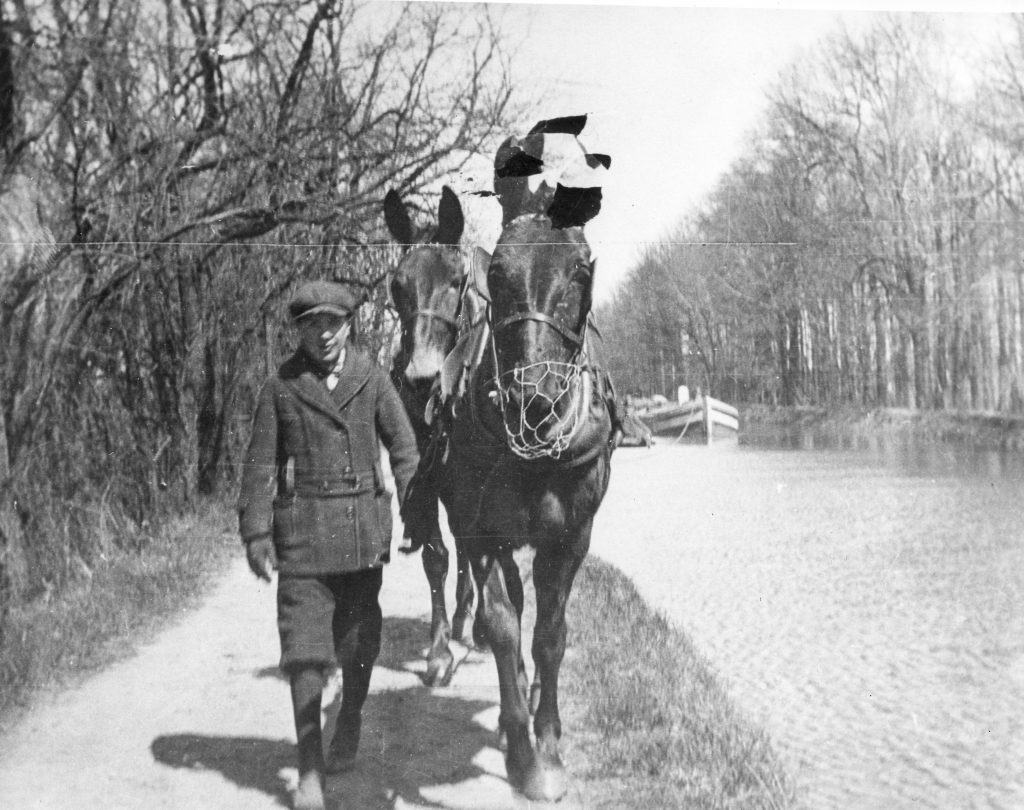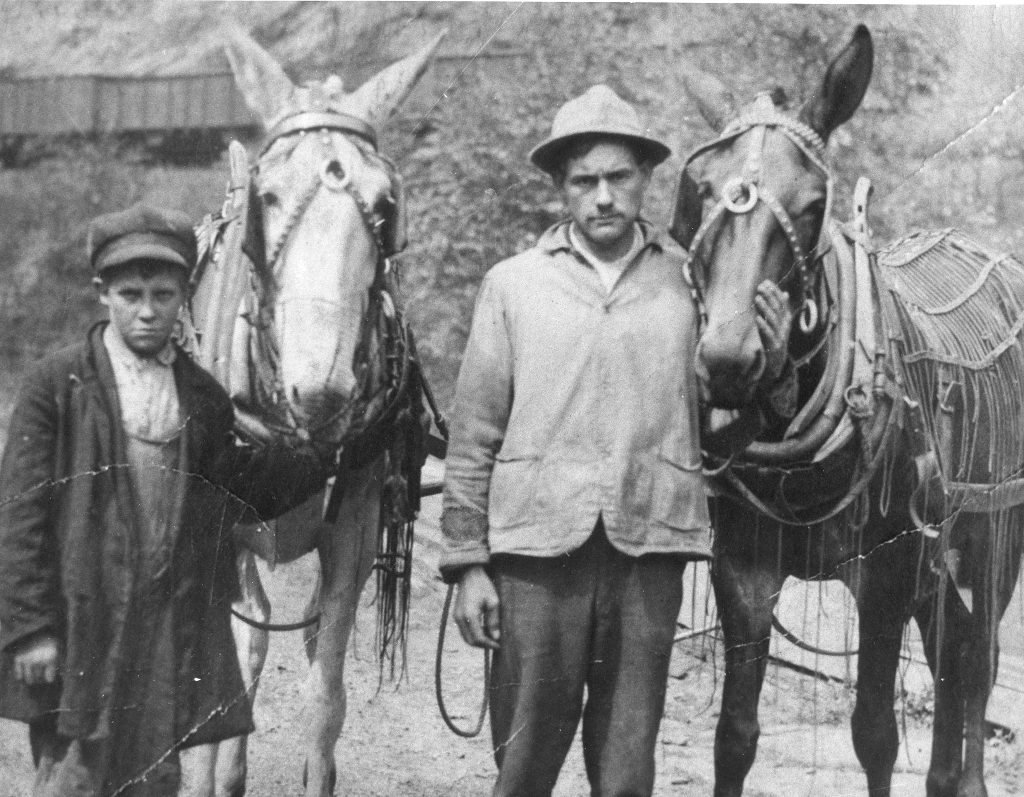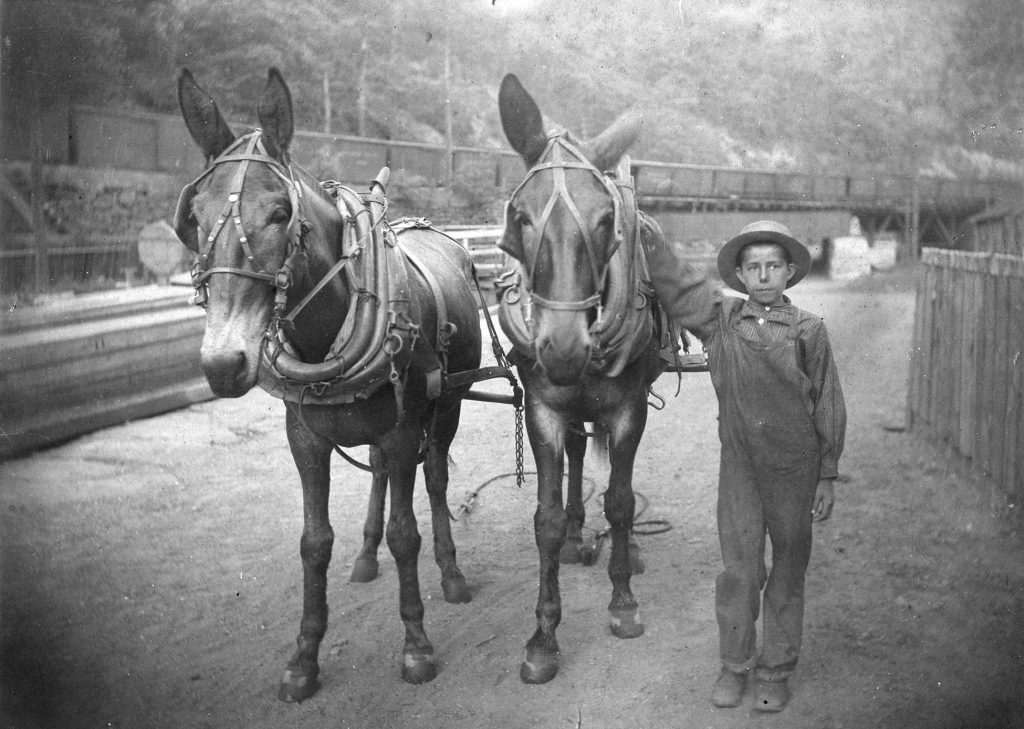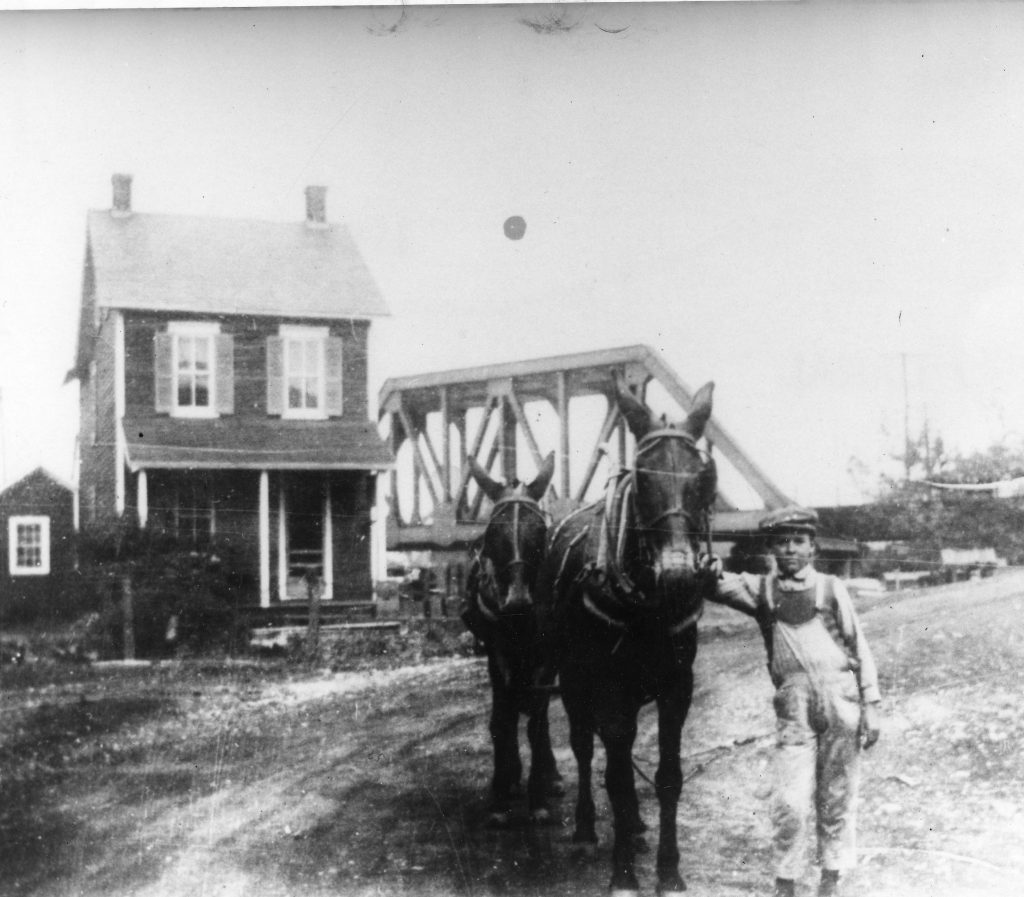Mules and Their Drivers along the Delaware & Lehigh Corridor
by NCM Historian, Martha Capwell Fox

David Laury looks well-dressed as he leads his mules on the Delaware Canal towpath. Wealthy people sold their old clothes, which were well-made of good fabrics, to second-hand garment dealers, or donated them to charities that passed them on to working class folks like mule drivers.
April 7 is National Walking Day, so today we salute the long-haul walkers in the D&L Corridor’s history – mules and mule drivers. The workday was 18 hours long on the Lehigh Navigation and the Delaware Canal. At an average speed of two miles an hour, a canal boat could travel as much as 35 or 36 miles a day. Mules and their drivers got brief breaks at locks, but the rest of the time they walked that slow, steady pace from before dawn until long after sunset.

Ted Sherman was about 12 years old when this photo of him with Lucy the mule was taken at Mauch Chunk on July 3, 1913.
During the 19th century heyday of the canals, most mule drivers were children, some as young as seven or eight. Most often, their families ran the boats, and siblings could trade off walking stints during the day. Boys over 12 were sometimes “rented” out to boat captains who did not have family workers, and those drivers spent the entire workday on the towpaths. As canal traffic declined and school became mandatory, mule drivers were more likely to be older teens or adults, but they still trekked those long days on the canals until the early 1930s.

John S. Grey of Easton was a teenager in 1916 when this photo of him and his mules was shot at Lock 3 on the Lehigh Canal.
Mule drivers were also responsible for the care and feeding of their mules, which belonged to the person or family whose boat they pulled. So, Lehigh and Delaware mules – the “engines” of canal boats – were, of necessity, well-cared for: well-fed, watered, and kept clean. Many drivers formed strong attachments to their mules and canallers considered them part of the family. “Mule was like a brother to us,” Captain Howard Swope said in an interview in the 1990s.

Daniel McCollick looked to be about 10 when he posed with his mules in 1911.

Lovett Wood with his mules at Lock 40, the “Dye House” lock in Allentown. HIs overalls were more typical mule driver wear.





















Join the Conversation!